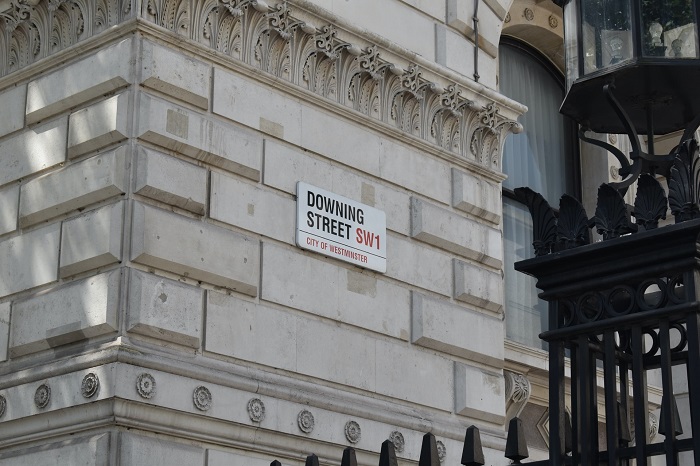Boris Johnson resigns: The design behind 10 Downing Street’s lectern

Most people probably didn’t have the same thoughts as I did when the Prime Minister gave his resignation speech. As with a lot of the things I interact with, touch, see, and experience, my mind often tends to wander and think about how it can be improved, or at least, how was designed and made, and what was it made from.
In this blog, I will discuss some of the things that the designer and manufacturer may have been considering for Boris Johnson’s lectern as he stepped up to give his resignation speech. I will also link these thoughts to some of the modules we teach as part of the BA (Hons) Product Design degree.
Colour, Material, Finish (CMF)
The CMF of a product is important as there is a link between the end product and how it makes us feel. CMF is constantly changing and moving with trends. It relates to our sensors from when we smell a material, touch a product and experience the texture of the material used. It’s intrinsically linked to our human emotions.
Politics and 10 Downing Street radiate power and money, so the designer for the lectern would have mostly likely assessed what type and finish of wood would make the viewer feel at ease and confident with what a speaker behind the product would say.
We probably didn’t realise we were experiencing these emotions, but imagine the Prime Minister giving a speech on a cheap plastic lectern, it is something we would pick up on and would cause us to different feelings. It’s important it also able to withstand UV from the sun and maybe even some rain. With this in mind, the correct selection of materials and finish is of upmost importance to ensure it has a professional look when the Prime Minister is standing behind it. These are all things we explore as part of the Concept Design Module.
How it was made - Design for Manufacture (DFM)
Cost and time were probably not at the top of the designer’s agenda when designing the lectern, but it’s something that we as designers have to consider when producing something for manufacture.
How will it be made? Where will it be made? How will it be assembled and by what (human, or machine)? How long will it take? All of these are important and impact the timeline to launch of a product as well as the amount it will cost to make.
Being efficient here will generate a positive result on your overall profit, in addition to reducing scrap rates. These are all things we learn about as part of the Prototypes and Production module.
Sustainability
A lectern is a product that is used more than once and will last years. Therefore, sustainability may not have been considered too high, however, it is not just about what happens to the product after its design life, we also need to consider where the materials were sourced from to manufacture the product. These are all things we consider as part of the Sustainable design module.
User Centred
User centred design is hugely important when designing a product such as the Prime Minister's lectern. Firstly, we need to ensure the lectern is at the correct height for the user, and ideally can be altered so those of different heights could use it another time.
We also need to consider other elements such as electrical feeds and lighting, how these are routed through the lectern so they are not visible and how will the company’s logo or brand be displayed on the front.
Lastly, something that will coincide with DFM is how will the lectern be assembled? We are all familiar with flat-pack frustration, so it's good to consider the ways of assembly and disassembly. We discuss these things as part of the User Centred Design module.
Why Study Product Design at WGU?
Studying a Product Design degree at WGU will help build skills in areas such as drawing, CAD, development, prototyping and creating designs for business. You will develop the knowledge you need to become a professional product designer.
Take that next step; explore our undergraduate courses to find the right one for you. Or, sign up for one of our short courses for a taster to help you develop further, both personally and professionally. You can also visit us at an open day to learn more about our courses and get a feel for student life at WGU.
Written by Daniel Knox, Lecturer in Product Design at Wrexham Glyndwr University.